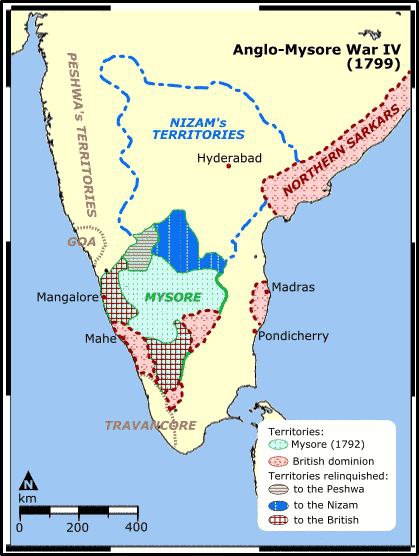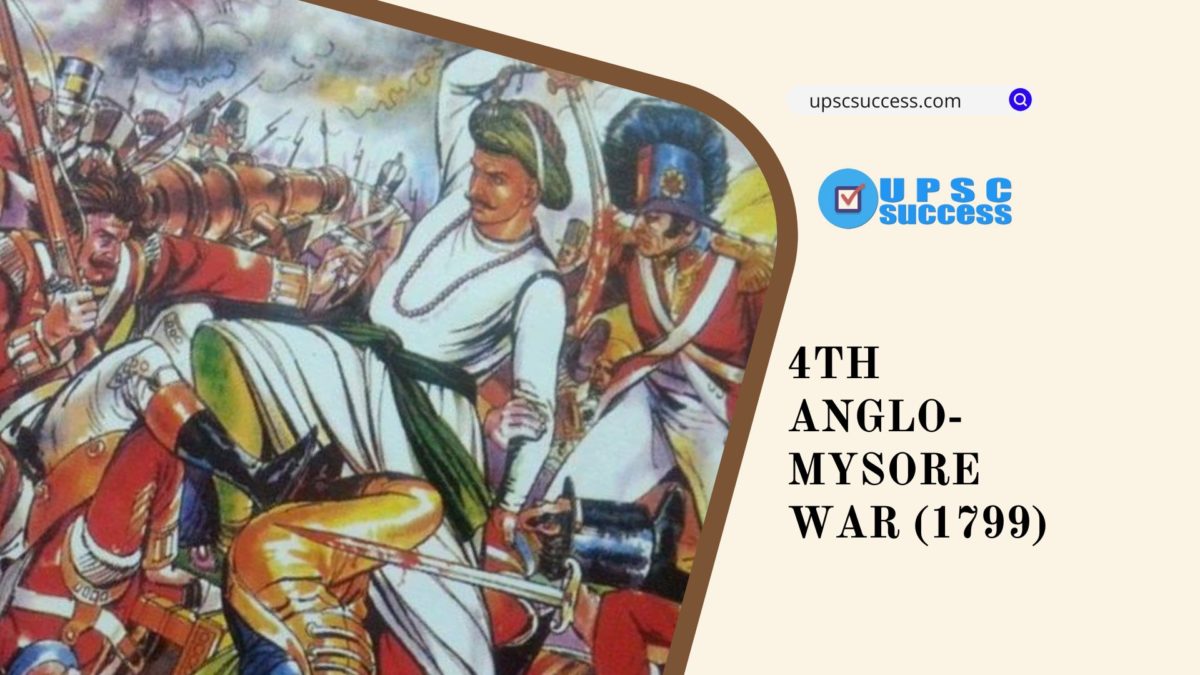Contents
Fourth Anglo-Mysore War (1799)
The Fourth Anglo-Mysore War was a conflict in South India between the Kingdom of Mysore against the British East India Company and the Hyderabad Deccan in 1798–99. This was the final conflict of the four Anglo-Mysore Wars. The British captured the capital of Mysore. The ruler Tipu Sultan was killed in the battle.
Lord Wellesley, an imperialist to the core was concerned about Tipu’s growing friendship with the French and aimed at annihilating Tipu’s independent existence or force him to submission through the system of Subsidiary Alliance.

The war began on April 17, 1799 and ended on May 4, 1799 with the fall of Seringapatam. The English was again helped by the Marathas and the Nizam.
The new state of Mysore was handed over to the old Hindu dynasty (Wodeyars) under a minor ruler Krishnaraja III, who accepted the subsidiary alliance.
FAQs
A three month campaign was launched by the British using two forces of army, one led by General George Harris from Vellore and the other led by Colonel James Stuart from Cannanore. Both the troops marched into Mysore in 1799 and attacked Tipu Sultan and his men from all sides
The Fourth Anglo-Mysore War was a conflict in South India between the Kingdom of Mysore against the British East India Company and the Hyderabad Deccan in 1798–99.
The war ended with the Treaty of Srirangapatnam by which half of the Mysorean territory was taken over by the victors.
The primary cause of the fourth Anglo-Mysore War was the ambition of Wellesley to destroy the state of Mysore for once and all. The efforts of Tipu to find allies from some foreign countries were simply a pretext for war.

